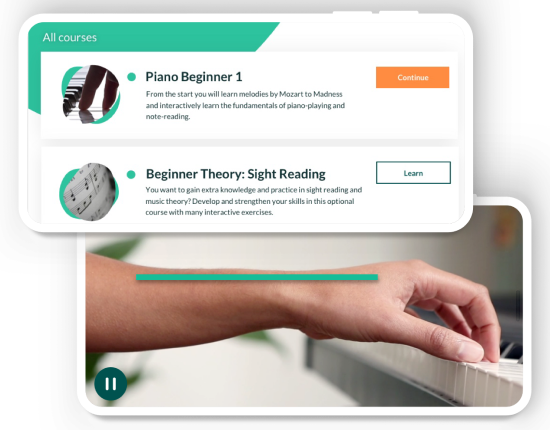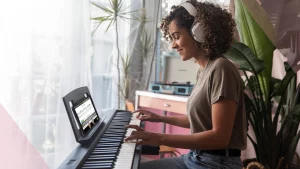When it comes to keyboard instruments, the debate between harpsichord vs piano has been a topic of discussion among musicians, educators, and enthusiasts alike. Understanding the differences between these two instruments is not merely an academic exercise; it has practical implications for performers, composers, and learners.
Why should one care about the distinctions between a harpsichord and a piano? For anyone involved in the study or performance of music, particularly keyboard music, this knowledge is crucial. It informs the interpretation of historical pieces, the techniques employed in performance, and the approach to learning and teaching. Furthermore, this understanding enriches one’s appreciation of music history and the evolution of keyboard instruments.

Key differences between piano and harpsichord
When it comes to harpsichord vs piano, the distinctions are more than just cosmetic. From sound production to historical context, these two instruments offer unique experiences for both the player and the listener. Let’s explore the distinctive factors that differentiate them, as well as factors that emphasize their similarities.
Sound production: how they make noise
In the harpsichord vs piano debate, the way each instrument produces sound is often the first point of discussion. Harpsichords use a mechanism that plucks the strings with a plectrum, usually made of quill or leather. This results in a bright, somewhat metallic tone that is characteristic of Baroque music. Pianos, on the other hand, employ a hammer action to strike the strings, allowing for a wider range of tonal qualities—from soft and mellow to loud and resonant. This versatility in sound production makes the piano suitable for a broader range of musical genres.
Volume control: a tale of two keyboards
The piano offers dynamic control, meaning you can play both soft and loud piano notes within the same piece, simply by varying the force applied to the piano keys. The harpsichord doesn’t offer this luxury. The volume is consistent, which means that expressiveness comes from music articulation and timing rather than dynamics. This unique feature often leads composers to write harpsichord music with intricate ornamentation to add expressiveness.
Number of keys: 61 vs 88
A standard modern piano has 88 keys, giving it a seven-octave range. This allows for a wide variety of musical pieces to be played, from low bass notes to high treble notes. The harpsichord usually has fewer keys, around 61, which limits its range but also gives it a more focused tonal palette. This is particularly noticeable in historical pieces written specifically for the harpsichord.
Historical context: from baroque to rock
The harpsichord was the star of the Baroque period, featured in works by composers like Bach and Handel. The piano took the spotlight in the Classical era, with composers like Mozart and Beethoven writing iconic pieces for it. Today, the piano has found its way into nearly every genre, from jazz to rock to electronic music, making it one of the most versatile instruments in history.
Material and construction: what are they made of?
Harpsichords are generally made from lighter woods like poplar or lime and have intricate, often hand-painted, soundboards. Pianos are more robust, featuring cast-iron frames that can withstand the high tension of the strings. These material differences contribute to their distinct sounds and durability.
Technique and handling: playing styles
Playing technique is another area where these instruments diverge significantly. Harpsichordists often focus on precise fingerwork and ornamentation, while pianists have the freedom to explore a wider range of dynamics and expressions. If you’re using Skoove, you’ll find that the platform offers specialized exercises to help you master the techniques unique to each instrument.
Tuning: keeping things pitch perfect
Harpsichords generally require more frequent tuning, sometimes even between performances, due to their sensitive construction. Pianos are more forgiving in this regard, often requiring tuning only a few times a year, depending on usage and environmental conditions.
Status symbol: from aristocrats to rockstars
In the past, owning a harpsichord was a sign of wealth and high social standing. Today, it’s more of a niche instrument cherished by enthusiasts and early music aficionados. The piano, however, has become ubiquitous, found in a variety of settings from concert halls to dive bars to living rooms.
The video below will help you better understand the main differences between these two instruments.
Short summary of the video
At first glance, the harpsichord and piano might seem similar due to their keyboards, strings, and soundboards. However, they have distinct differences.
- The harpsichord predates the piano, originating in the 15th century, while the piano was invented in the early 18th century.
- The resemblance between the two instruments is because early pianos were housed in harpsichord cases.
- The primary distinction lies in their sound production mechanisms:
- The harpsichord’s keys act as levers, lifting “jacks” with tiny “plectra” that pluck the strings.
- The piano, with its intricate mechanism involving over a hundred parts per key, produces sound through hammers striking the strings.
- These differences in action result in unique sounds, touches, and playing techniques for each instrument. The harpsichord demands total body relaxation and minimal movement, while the piano requires arm and body weight combined with relaxation.
- Contrary to popular belief, the harpsichord does have dynamics, albeit limited compared to the piano. The touch on the harpsichord keys can influence the sound’s dynamics and color.
- Harpsichords vary in design based on their origin, with variations from country to country and builder to builder.
- Pianos, too, have evolved over time, with modern pianos standardizing only by the end of the 19th century.
Similarities between piano and harpsichord
While the harpsichord vs piano debate often focuses on their differences, it’s worth noting that these two instruments also share some similarities. Let’s explore a couple of key areas where they overlap.
Acoustic wooden body: the resonance chamber
Both the harpsichord and the piano have acoustic wooden bodies that serve as resonance chambers for the sound produced. This wooden construction is crucial for amplifying the sound and giving it a warm, rich quality. Whether you’re plucking a string on a harpsichord or striking one on a piano, the sound resonates through the wooden body, enhancing its tonal qualities. This shared feature is a testament to the enduring importance of natural materials in sound production, even in an age of electronic instruments.
Playing technique: more alike than you’d think
When it comes to playing technique, you might be surprised to find that the basic principles are quite similar for both instruments. Yes, the harpsichord and piano have their unique quirks, but at the end of the day, they’re both keyboard instruments. This means that many of the fundamental techniques—like proper hand positioning, finger independence, and basic keyboard navigation—are transferable between the two.
Settling the harpsichord vs piano debate
In the world of keyboard instruments, the harpsichord vs piano debate is a fascinating one, filled with historical nuances, technical intricacies, and a dash of personal preference. While they may look somewhat similar to the untrained eye, these two instruments offer vastly different experiences for both the player and the listener.
We’ve explored their key differences, from sound production mechanisms to historical context, and even touched on the surprising similarities they share.
So, the next time someone sparks up a conversation about harpsichord vs piano, you’ll be well-equipped to chime in with your newfound knowledge.
Author of this blog post:

Eddie Bond is a multi-instrumentalist performer, composer, and music instructor currently based in Seattle, Washington USA. He has performed extensively in the US, Canada, Argentina, and China, released over 40 albums, and has over a decade experience working with music students of all ages and ability levels.














